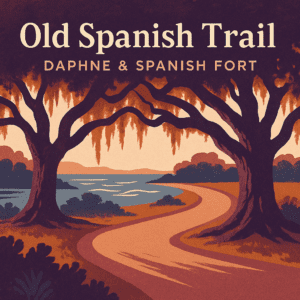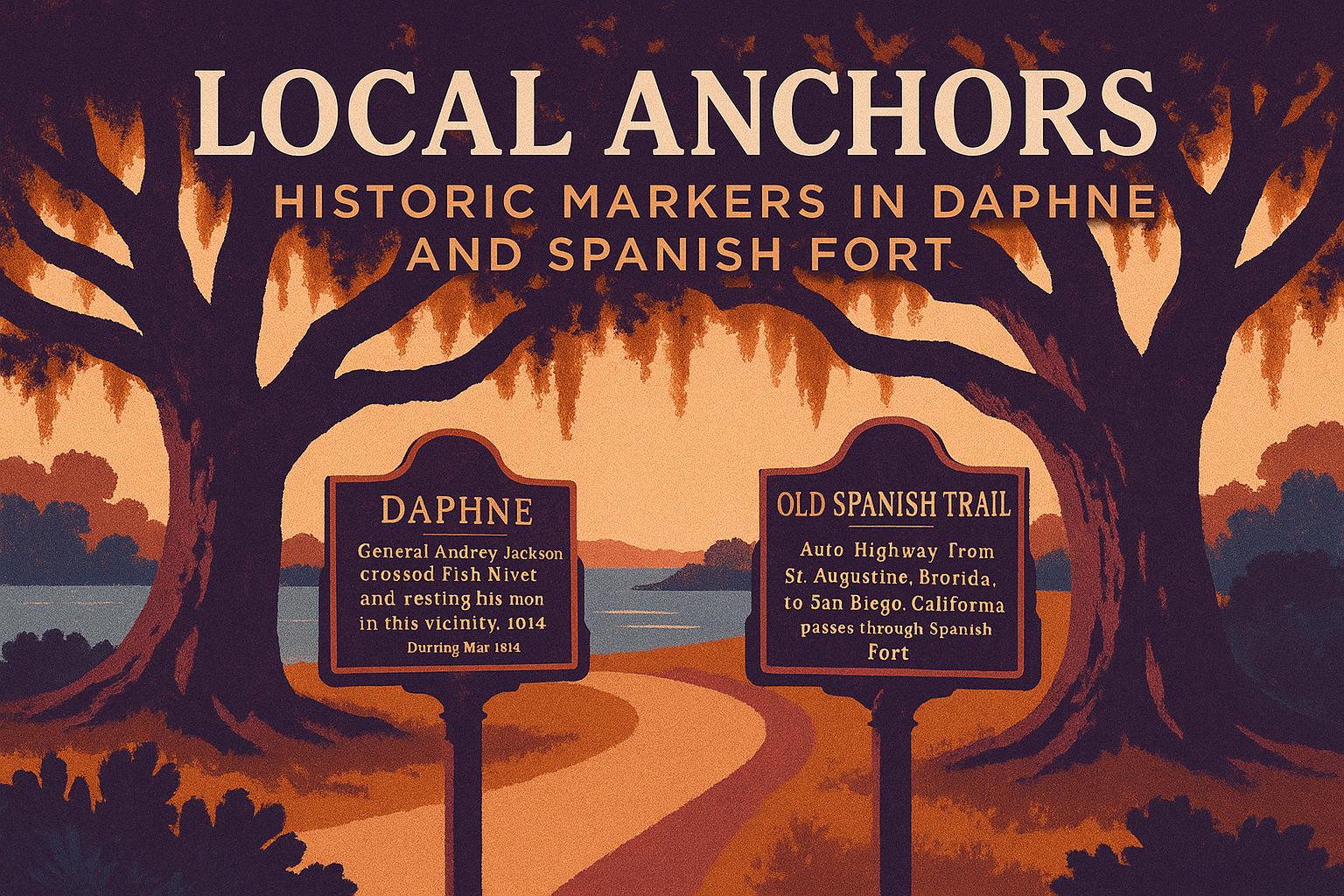Welcome to Daphne, the Jubilee City — a place where the past feels alive in every oak tree, shoreline, and smile. Nestled along the Eastern Shore of Mobile Bay, Daphne’s story stretches across centuries, from Native American roots to colonial footprints, from Civil War echoes to vibrant cultural traditions that still shape the community today. Whether you’re a longtime resident, a newcomer putting down roots, or someone considering a move here, Daphne’s heritage has a way of drawing you in.
The Jubilee City: Nature’s Celebration
Daphne’s most celebrated tradition is the Jubilee — a natural wonder that occurs only here and in Tokyo Bay. In the predawn hours, when conditions are just right, fish, shrimp, and crabs swarm into shallow waters seeking oxygen. Neighbors rush to the shoreline, calling out “Jubilee!” as families gather with lanterns, nets, and buckets. It’s less about the seafood bounty and more about the sense of community. The bay comes alive, and so does the spirit of Daphne.
This phenomenon inspired the annual Jubilee Festival of Arts, held each fall in Olde Towne Daphne. It’s a celebration of creativity, with artists, food vendors, and live music filling the streets. Together, the natural and cultural Jubilees embody what Daphne is all about: abundance, joy, and togetherness.
Ancient Footprints and Andrew Jackson’s Oak
The lands we now call Daphne were once home to the Tensaw, Choctaw, Creek, and Seminole peoples. Later came the French and British during colonial times, followed by American settlers.
One of the most enduring local stories involves General Andrew Jackson. In 1814, on his way to Pensacola during the War of 1812, Jackson and his troops camped beneath a sprawling live oak in Daphne. Today, that oak still stands in Village Point Park Preserve, known simply as the Jackson Oak. Estimated to be more than 300 years old, its moss-draped branches feel like living witnesses to centuries of human history on the bay.

The Old Methodist Church and a Community’s Memory
Built in 1858, the Old Methodist Church is Daphne’s oldest surviving public building and the second-oldest church in Baldwin County. During the Civil War, Union troops camped on its grounds, leaving behind their own chapter of history. Inside, the original pews and chandeliers remain, as does the small balcony once used by enslaved people — a poignant reminder of the struggles woven into our past.
Today, the church houses the Daphne History Museum, where artifacts, photos, and stories keep the city’s past alive. Walking its wooden floors feels like stepping back in time, into the faith and endurance of those who built the community we know today.
African-American Heritage: Resilience and Legacy
Daphne’s African-American community shaped much of the city’s identity through education and perseverance. In the late 1800s, the Eastern Shore Baptist Academy became the first school for Black children in Baldwin County. By 1927, it grew into the Baldwin County Training School, offering high school education at a time when such opportunities were rare. Today, its legacy is honored at the Black Education Museum, a space filled with photographs, desks, and memories of determination.
The Yancey–Crane Cemetery, tucked away for years, now holds its rightful recognition as a sacred site. It is the resting place for early African-American residents, including veterans and survivors of the Clotilda, the last known slave ship to bring captives from Africa. Descendants still live in the area, carrying forward the resilience of those who came before them.
Italian Roots in Belforest
In the late 1800s, Italian families arrived in what is now the Belforest community of Daphne. They cleared land, built farms, and started small businesses, weaving their culture into the local fabric. Their faith anchored them, and in 1895 they built the Church of the Assumption, the first Catholic church in the area.
These families — names like Manci, Guarisco, and Chiariglione — became leaders in the community. Some even went on to serve as mayors of Daphne. The spirit of their contribution lives on today in the annual Festa Italiana, where food, music, and tradition honor the Italian colony that helped shape Daphne.
Hidden Gems and Beloved Landmarks
Beyond its well-known stories, Daphne holds a wealth of hidden treasures:
Village Point Park Preserve – Home to the Jackson Oak and historic cemeteries dating back to the 1800s.
Old Spanish Trail Marker – A quiet reminder of the early automobile age and Andrew Jackson’s encampment.
May Day Park – A beloved bayfront gathering place, named for community festivals held here for more than a century.
Daphne Gator Boardwalk – A winding trail through the wetlands of D’Olive Creek, where wildlife thrives just steps from town.
These places aren’t just attractions — they’re threads in the tapestry of Daphne’s story, places where history, nature, and community meet.
A City Rooted in Heritage
Daphne continues to grow and modernize, but its history remains close to the surface. Every Jubilee, every old oak, every preserved church or schoolhouse reminds us that this city was built by generations who loved the bay, believed in community, and persevered through hardship.
For residents, newcomers, or visitors, the message is clear: Daphne’s history is not just something to study — it’s something to live. It’s in the festivals, in the preserved landmarks, and in the stories told across kitchen tables. In Daphne, the past is not gone; it’s a living guide for the present and future.

Sources
Daphne City Archives
Daphne History Museum exhibits
Village Point Park Preserve interpretive materials
Black Education Museum, Daphne, AL
Local journalism on Jubilee phenomenon and Yancey–Crane Cemetery
Community heritage stories preserved by long-time residents

